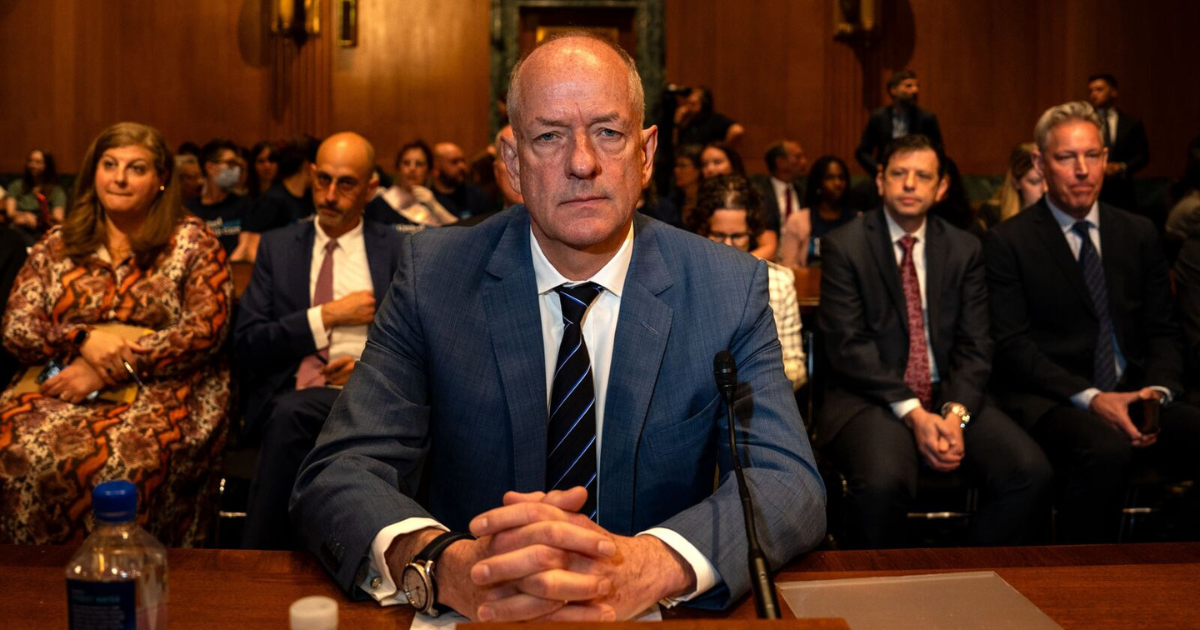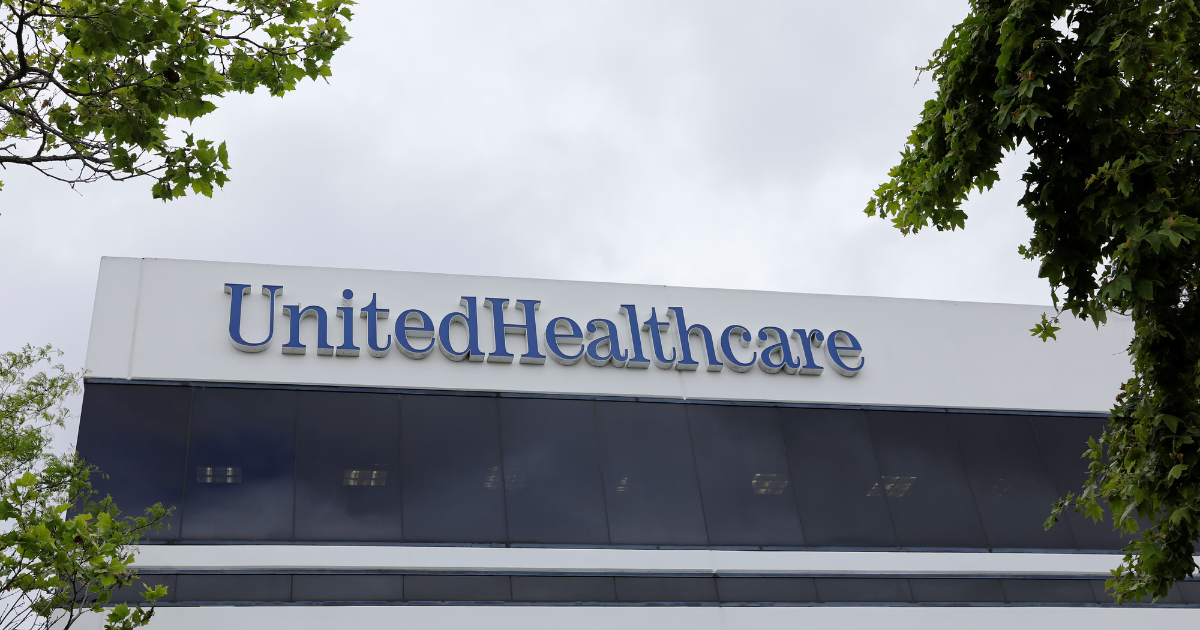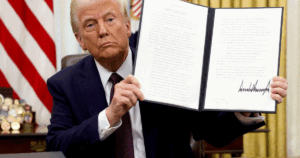UnitedHealth Group’s disastrous earnings report sparked a 1.3% Dow drop on April 17, 2025, a loss of 500 points. This sharp decline ruffled financial markets.
UnitedHealth’s stock plunged 22.4% and was its worst single-day loss in almost 27 years. Other major indices stayed steady, but the Dow Jones fell below 39,500 after the drop.
Key-Takeaways:
- On the 17th of April in 2025, UnitedHealth’s poor earnings report caused a 1.3 percent drop in the Dow, while other major indices remained steady.
- The drop highlighted the role that individual stocks play in determining the prices of price-weighted indices, including a shifting of the sector becoming predominantly healthcare for the dow, moving from UnitedHealth to Goldman Sachs.
Dow Drops as UnitedHealth’s Earnings Miss Catalyze
 The biggest reason for the Dow drop was UnitedHealth’s weak first quarter. On all key metrics, the company missed Wall Street expectations.
The biggest reason for the Dow drop was UnitedHealth’s weak first quarter. On all key metrics, the company missed Wall Street expectations.
Revenue at UnitedHealth was $109.6 billion and adjusted earnings per share $7.20. Both figures came in well over 1% of consensus estimates.
The most alarming was the lowered full-year guidance from the company. Its forecast of adjusted EPS of $26 to $26.50 was a sharp 10 percent cut from an analyst’s estimate of $29.72.
But UnitedHealth CEO Andrew Witty admitted in the earnings release that the company ‘did not perform up to our expectations.’ It also helped to add to investor concerns.
The Dow was further hit by the statement, and markets decided whether to continue to trust UnitedHealth. By 2023, the company held 14 percent of the commercial health insurance market and 28 percent of the Medicare Advantage.
UnitedHealth has such a heavy weighting in the index that it magnified the Dow Drop. The Dow’s greatest component by share price, its fall badly affected the overall index.
By the close of the trading day, UnitedHealth’s share price was down $585 to $454. That wipeout erased $120 billion of market value, knocking the company out of the top 20 of America’s most valuable companies.
However, other major indices exhibited a different market sentiment than the Dow Drop. Both the S&P 500 and the Nasdaq Composite found themselves in the green with increases of 0.1%, while the Dow was left alone to decline by 0.1%.
It brings to light just how unique the structure is for the Dow Jones Industrial Average. Unlike most indices, the Dow also weighs its 30 components according to share price, not market capitalization.
The timing of the Dow Drop occurred in tandem with growing worries about the Federal Reserve policy. Fed Chair Jerome Powell came in for Trump’s criticism for not cutting interest rates sooner.
He said that falling oil, grocery, and egg prices were evidence that it was the right time for monetary easing. He also took credit for EU Central Bank cuts and criticized the Fed’s “too little too late.”
The exact clash also underscored the growing strain between the Fed and the money supporters on how the central bank should react to the economy. Trump’s comments were a further bit of unease among the broader market.
The day before Powell had set a cautious tone. In fact, he admitted, while acknowledging inflation concerns, that central banks have to strike the balance between price stability and the widest possible employment.
His remarks also appeared to be pointing to fears of stagflation — rising prices in tandem with economic growth that has stalled. Investor anxiety was therefore likely to be a contributing factor, and the Dow Drop was heightened.
The Dow Drop was such that the index briefly landed beneath 39,000. However, quickly buyers showed up to bring it back over this psychological threshold.
According to technical analysts, the market might head into a consolidation phase in that range, between 39,000 and 40,000. The near-term direction of the Dow could be defined by this range.
Bulls have to then push the prices above 39,984 to reverse the negative momentum. That would open the way for a test of the 40,000 mark.
The Dow Drops have to keep going and lower the index beneath 39,000 if they want to return to this low, and traders will likely become driven to the April 10 bottom at 38,431. That would serve as an important point for the index stability at this level.
There are also potential downside catalysts on the minds of market participants. In addition to this general sense of market unease, real-world continuing trade tensions and geopolitical uncertainties pressure out more risk premium.
At the moment, the odds book on a Federal Reserve rate cut at the May meeting is pegged at just 9 percent. This implies that market players do not expect any near-term easing from monetary policy.
A reduced probability of immediate Fed support may limit the ability of the market to quickly rebound to normal levels from the Dow Drop. It will be especially true if other negative corporate earnings surprises appear.
Sector Impacts and Investment Implications
 The Dow Drop struck hardest at the health care sector, not uniformly. Meanwhile, pharmaceutical company Eli Lilly soared 15 percent after firing revealed promising results for its weight loss pill.
The Dow Drop struck hardest at the health care sector, not uniformly. Meanwhile, pharmaceutical company Eli Lilly soared 15 percent after firing revealed promising results for its weight loss pill.
Within healthcare, however, we see a divergence in fundamentals due to this, e.g., a company-level tracing of the fundamentals is more useful. However, the performance of individual companies can be so different even during broader market or sector decline.
Goldman Sachs replaced UnitedHealth to become the highest-weighted component of the Dow Drop, which shifted the index’s leadership. This change would make Dow more sensitive to the financial sector’s performance and less sensitive to healthcare.
Conclusion
On April 17, the Dow Drop showed how individual stocks can really move a price-weighted index away from the broader market trend. Although the price may have really experienced an isolated event, investors are watching closely to see if it is the beginning of a wider market correction that is conducted by UnitedHealth regarding its Medicare billing.











